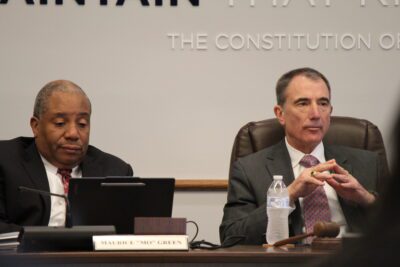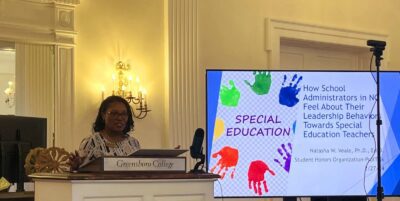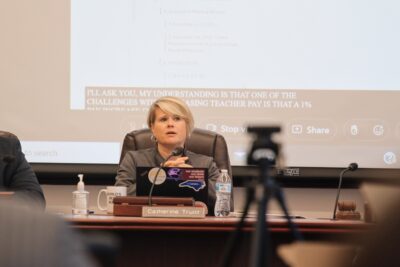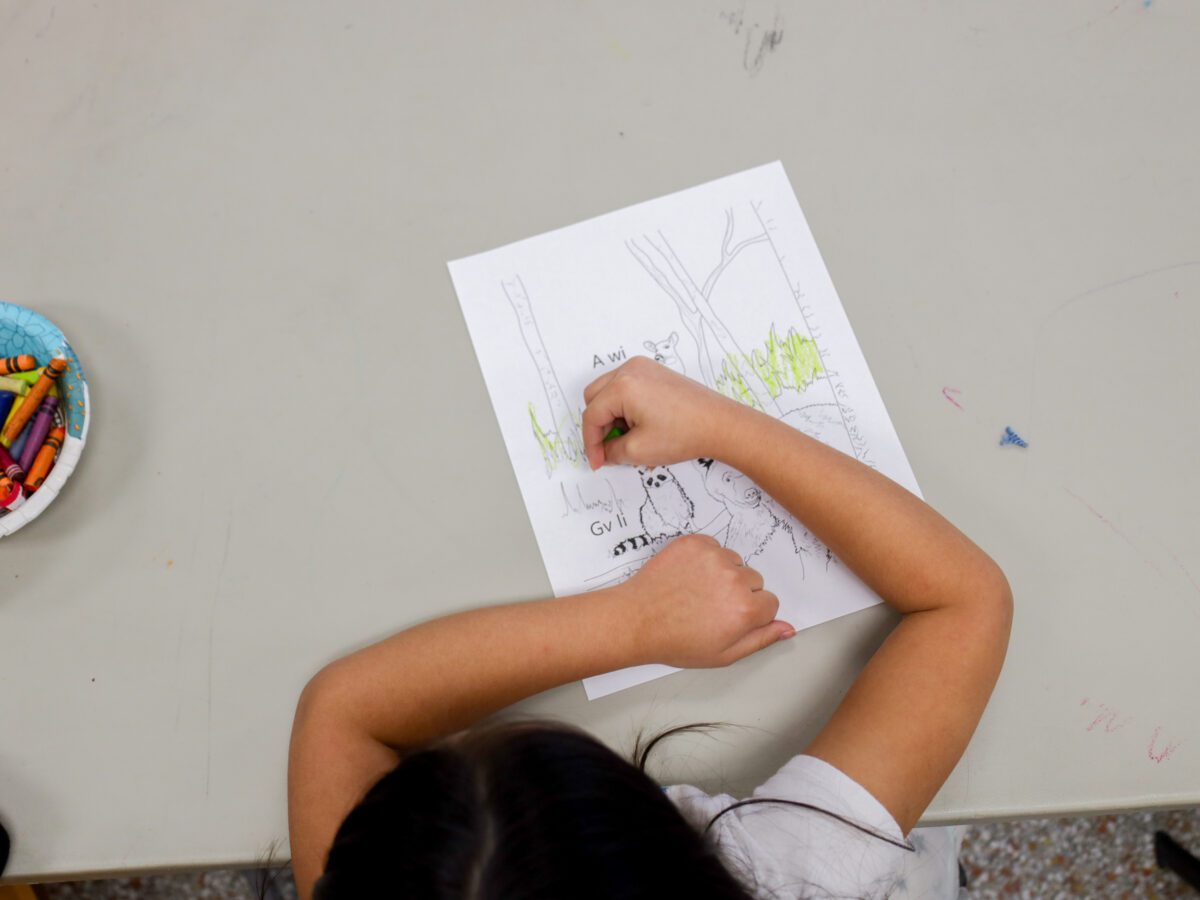
In a report to the General Assembly presented at the September State Board of Education meeting, the N.C. Department of Public Instruction’s (DPI) Office of Exceptional Children provided data on the performance of students with learning differences and plans to improve outcomes for these students.
North Carolina was one of 37 states determined by the Department of Education in June to “need assistance” with implementing the requirements of Part B of the Individuals with Disabilities Act. This determination is made after the department reviews a state’s academic achievement and compliance data, which is included in the report with the state’s determination letter.
“We recognize that there is much work still to be done to improve the outcomes of students with disabilities,” OEC Senior Director Carol Ann Hudgens said.
![]() Sign up for the EdWeekly, a Friday roundup of the most important education news of the week.
Sign up for the EdWeekly, a Friday roundup of the most important education news of the week.
Performance data
Proficiency rates were included in the report for students with Individual Education Plans (IEPs) — documents that outline progress goals for students with learning differences while they are enrolled in special education programs. The scores were reported for those following regular and alternative academic achievement standards.
The report also measured testing participation. Testing participation in this instance is the proportion of students with IEPs that took a standardized test compared to the total number of students who are enrolled in a special education program.
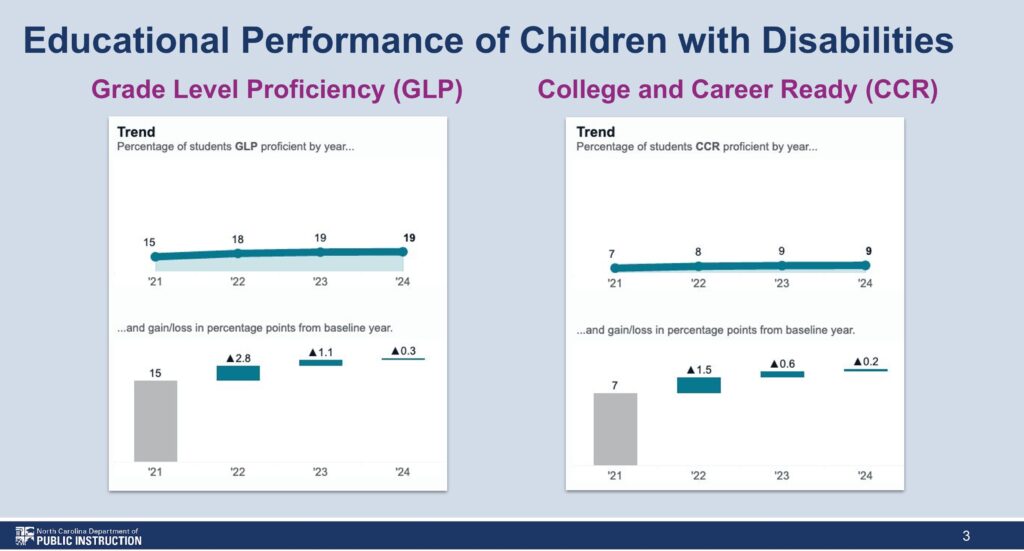
In the 2023-24 school year, 95% of students with IEPs in fourth grade, eighth grade, and high school took state assessments in reading and math. Of those students, nearly 56% took a reading exam with accommodations. For math, 61% of students had accommodations.
Overall, 19% of students with disabilities received a grade-level proficient score on their exams in 2023-24, the same as for the 2022-23 school year. That is compared to 54.2% of North Carolina students overall during the same time period. The report also found that 9% of students with disabilities tested were considered career and college ready, compared to 36.2% of students overall.
Read more

Learning environments
The state keeps record of the different educational environments that students with IEPs are placed in. According to the report, there are three scenarios measured for students in kindergarten through the age of 21:
- Being in a regular classroom 80% of the day or more,
- Being in a regular classroom 40% or less of the day, and
- Those attending separate schools, residential facilities, or being homebound or in hospital placements.
For the 2023-24 school year, the report found that:
- 70.7% of students were in the regular classroom at least 80% of the day,
- 11.1% of students were in a regular classroom less than 40% of the day, and
- 1.3% were attending separate schools or residential facilities, or were homebound or in hospital placements.
Among students with IEPs in preschool programs, nearly 30% were in regular school settings.
Exiting special education
It is required for the state to report the numbers and the ways that students exit the special education program. Exiting is reported in five different ways:
- Graduating with a traditional high school diploma,
- Graduating with a state-defined alternative diploma,
- Receiving a certificate,
- Reaching a maximum age, and
- Dropping out.
All students in North Carolina public schools must earn 22 credits in the Future Ready Course of Study to graduate from high school, the report says. This pathway is considered a traditional high school diploma.
Select students with disabilities can go through the occupational course of study program that has adapted course requirements with the same credit requirements as a traditional high school diploma. Some local school districts and other public school units may impose additional coursework to graduate.
In the 2022-23 school year, the most recent data available, 79.3% of students with IEPs between the ages of 14-21 exited special education by receiving a traditional high school diploma. The target that the state set for this metric was 80.8%.
Other students may have exited special education by dropping out of high school. The report found that 15.7% of students in special education who were between the ages of 14-21 dropped out during the same time period.
Read more
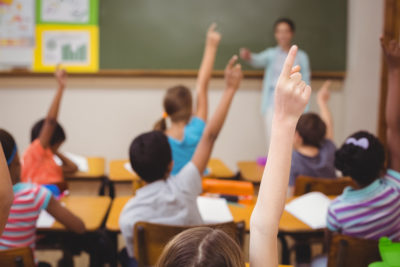

Transitions
Families put plans in place for students when they transition in and out of each phase of their education.
According to the report, most infants and toddlers receiving services for disabilities or developmental delays had an IEP developed and implemented by their 3rd birthday. Most holdovers in planning occurred because they needed to complete meetings, evaluations, and enrollment and arrange transportation.
Transition services look different for students leaving high school. Students over the age of 16 with IEPs can establish postsecondary goals after they are given a transition assessment and courses of study to assist them. The student is also invited to IEP meetings along with outside agencies that may be involved in sponsoring their future plans. In the report, it was found that a little under 45% of these students had a plan in place.
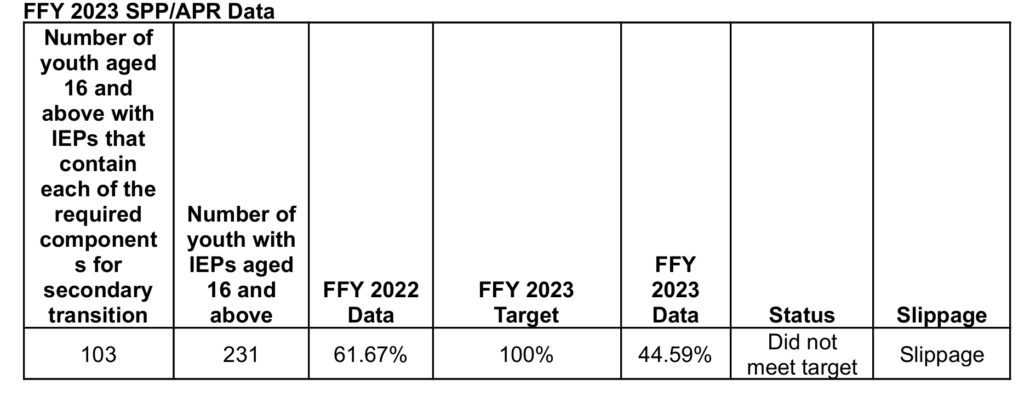
“Many PSUs within the state have experienced a high rate of attrition which has resulted in a lack of fidelity in transition planning across the state. NC will explore ways to increase technical assistance related to transition planning to address this hypothesis of slippage,” the report said.
Plans for improvement
In a presentation to the State Board of Education, the OEC outlined different ways they help schools and districts serve students with learning differences.
These improvement activities named by the OEC were a mix of financial and technical assistance along with opportunities for professional learning. Examples of these include an exceptional children teacher support program, stipends and tuition programs, and conferences.
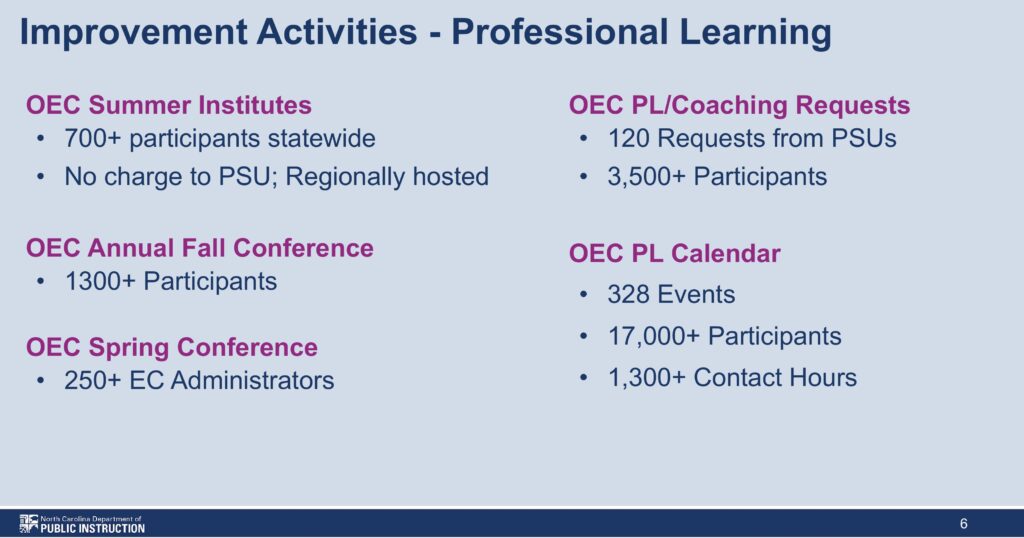
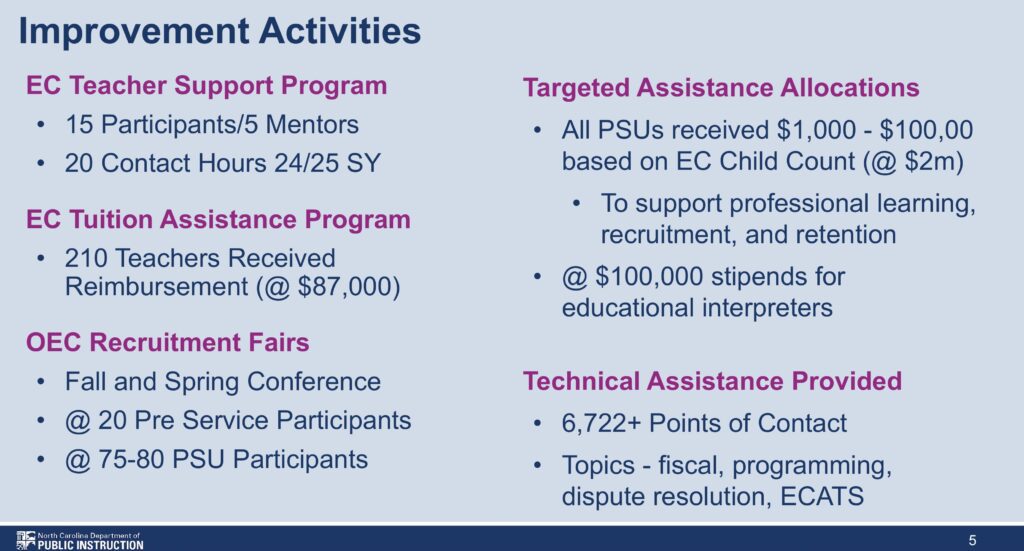
New for the 2025-26 school year, the OEC has introduced the Exceptional Children Competitive Grant to provide an additional financial investment into EC departments across that state. Recipients can use the grant to help recruit and retain EC teachers, provide them and other staff with professional learning opportunities, pay for instructional materials, and cover anything else that can help with delivering the curriculum to students.
Board member Catty Moore asked if district administrators and school staff would have access to the performance indicators that they need to improve on. Hudgens said they will create professional learning opportunities that are specifically aligned with those improvement areas.
One specific challenge Hudgens spoke about in her presentation was the recruitment of EC teachers. The director said that they had low participation in their recruitment fair last fall.
“We’re working with our institutes of higher education to make opportunities available for student teachers to attend our conference and participate,” Hudgens said. “And so we hope that will continue to grow.”
Recommended reading
